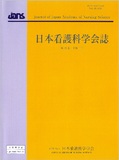Japanese
English
- 販売していません
- Abstract 文献概要
- 参考文献 Reference
要旨
目的:看護師の職業及び組織コミットメントに基づくプロファイルを抽出し,それぞれの割合及び特徴を明らかにする.
方法:中・大規模病院(300床以上)に勤務する看護師900人を対象に,自記式質問紙調査を実施した.職業及び組織コミットメントについてクラスター分析を行い,対象者をクラスターに分類した.次いで,各クラスターとワークエンゲイジメント等との関連を検討し,各クラスターの特徴を検討した.
結果:434人(回収率42.2%)を分析対象者とした.クラスター分析の結果,5クラスターが抽出された.そのうち,「組織関与型」が最も多く31.3%であった.また,「高関与型」と比べて,「功利関与型」「低関与型」はワークエンゲイジメントが低いなどの特徴がみられた.
結論:本研究の結果は,各々のコミットメントプロファイルに合った就業継続支援を考える際の一助となるものである.
Objective: To classify occupational and organizational commitment profiles among nurses, and clarify the proportion and characteristics of each type.
Methods: A self-administered questionnaire survey was conducted on 900 nurses working in medium-sized/large hospitals (with 300 or more beds). Cluster analysis of occupational and organizational commitments was performed, and the nurses were grouped into clusters. The relationship between each cluster and work engagement was examined to clarify the characteristics of the former.
Results: Among the 900 nurses, 434 were analyzed (response rate: 42.2%). There were 5 clusters representing commitments. <Organizational commitments> was the largest cluster, accounting for 31.3%. <Calculative commitments> and <low commitments> were more closely associated with a lower level of work engagement more closely than <High commitments>.
Conclusion: The fndings of the study exploring commitment profiles for nurses provide useful implications for supporting them to continue their jobs and remain with the organization.
Copyright © 2020, Japan Academy of Nursing Science. All rights reserved.


